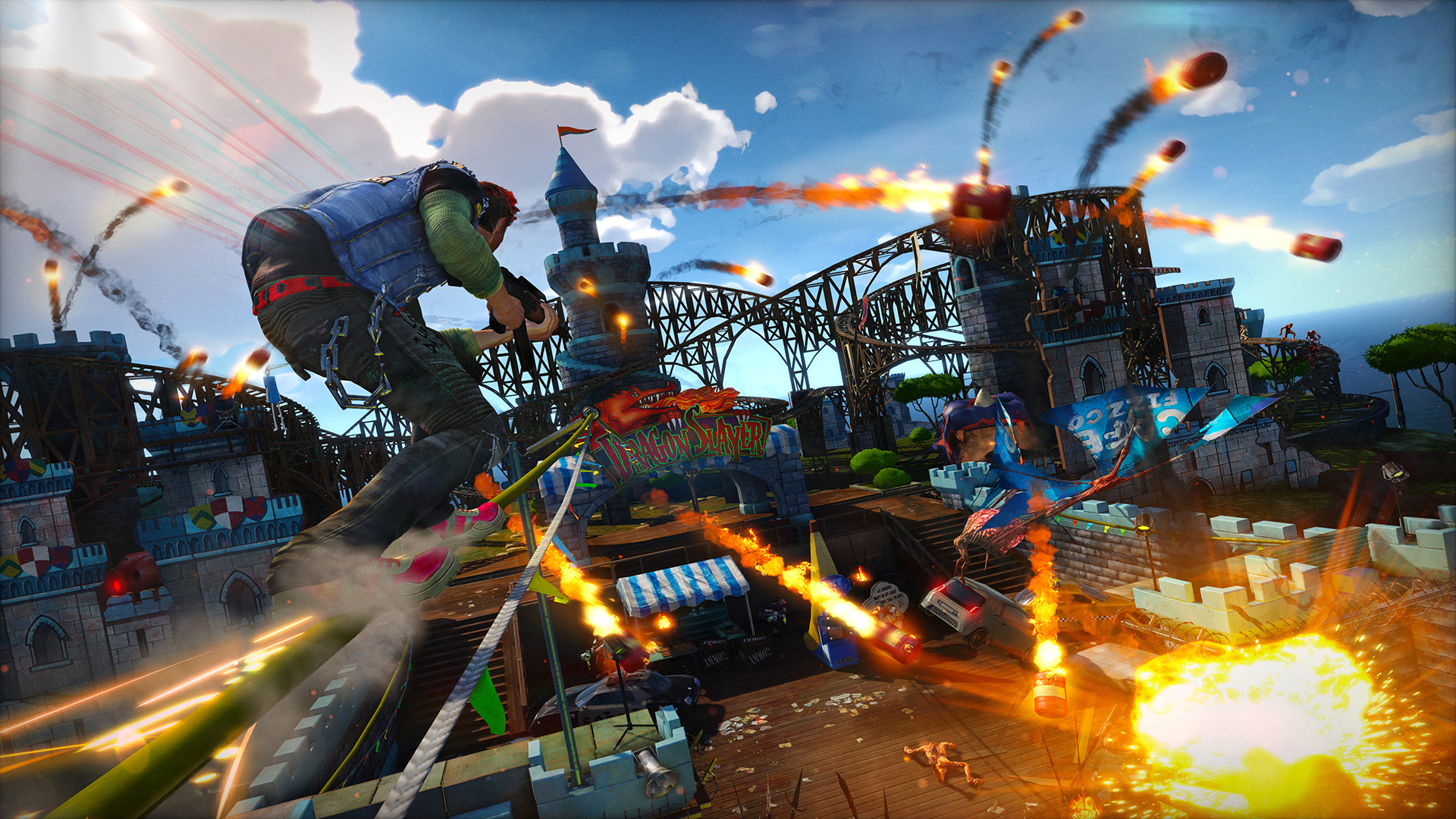Silent Hill is a classic video game that has stood the test of time. The game was first released in 1999 for the Sony PlayStation, and it quickly made an impact on the gaming world. Silent Hill is a survival-horror game that was praised for its unique approach to storytelling and the way it built suspense and tension. It was also noted for its use of psychological horror elements, which set it apart from other survival-horror games of its generation.
Silent Hill remains an influential game in the gaming industry, and it has earned its place among the pantheon of retro games. It introduced many unique gameplay mechanics and design elements that inspired many other games in the survival-horror genre. The game’s reputation as a classic and its importance in gaming culture make it a significant title to examine. In this article, we will explore Silent Hill in detail and analyze its impact on the gaming world.
Historical Background of Silent Hill
Silent Hill entices the players to confront their fears through its dark, enigmatic storyline and spine-chilling gaming atmosphere. The game was developed by Team Silent, a group of developers from Konami Computer Entertainment Tokyo, a Japanese game development company. Silent Hill’s debut as a title in 1999 brought a wave of popularity for the survival-horror genre of video games in Japan. The game’s unique brand of immersive horror widened its reach in the western market, producing a dedicated following of fans across the world.
The Silent Hill franchise has seen multiple installations since its creation in 1999. Notable entries include Silent Hill 2 (2001), Silent Hill 3 (2003), and the series’ final game, Silent Hill: Book of Memories (2012). Each title in the franchise builds upon the horrific and mysterious narratives from earlier games, driving emotionally charged storylines and iconic characters that continue to captivate fans worldwide.
Silent Hill has stood the test of time as one of the most influential horror games in the industry’s history. The game redefined the survival-horror genre with psychologically driven narratives, intricate environmental storytelling, and an unparalleled sense of dread that captivates players. Silent Hill’s success ignited a slew of game developers to create their unique brand of survival-horror titles, resulting in a thriving genre of games that are popular today.
The reception of Silent Hill among critics and fans was overwhelmingly positive when the game dropped in 1999. Fans of the genre praised the game for the unique blend of realistic graphics, haunting environments, challenging puzzles, and psychological horror that it offered. Critics were equally impressed, and the game quickly became a must-have title for any horror enthusiast’s collection.
Gameplay Mechanics and Design
Silent Hill is a horror survival game that provided a unique experience in its era. The game mechanics are an essential aspect that contributes to the game’s success. Silent Hill gives the players the options to choose their style of play while navigating through the world. The gameplay mechanics cater to both the puzzle-solving and the combat sides of the game.
The game world and level design contribute to the overall atmosphere and horror experience. The developers created the game’s world to be dark and murky, with fog and darkness masking what is happening in the environment. As the player goes through the town, they encounter various places such as abandoned schools and hospitals, deep dark forests, and empty roads. The level design of each location creates a sense of tension and confusion, making the player feel lost and vulnerable.
Weapons and items are significant in Silent Hill, with artifacts like the shotgun, pistol, and rifle playing a crucial role in survival. In addition to weapons, the game has other items that players have to use strategically to progress through the game. Health items and ammunition are scarce, making the players choose wisely when and how they use them.
Enemies in Silent Hill come in many forms, ranging from humanoid creatures to mindless abominations. The creatures in Silent Hill will not attack the player instantly, but rather they seem to come at night or hide in the labyrinth of the town. The game’s enemy encounters are different from other horror games, with players having to use tactics and weapon proficiency to emerge victorious.
In summary, Silent Hill offers diverse gameplay mechanics, level designs, weapon itemizations, and enemy encounters. Not only does the game offer a unique horror experience, but it also stimulates the player’s mind by challenging them to solve complex puzzles. Silent Hill leaves a long-lasting impression on its players through its game mechanics and level design.
Audio and Visual Elements
Silent Hill is an excellent example of how sound and music can impact the overall game experience. The musical score is an integral part of the game, and Akira Yamaoka’s work on the series’ music was among the most creative video game soundtracks of its generation. The game’s soundtrack uses a mix of industrial sounds, rhythmic melodies, and eerie soundscapes to communicate the game’s themes and atmosphere effectively.
Additionally, the game’s use of graphics and art style sets it apart from other games in its genre. The game’s visuals were arguably as important as the sound in creating a truly immersive experience. The game used a combination of photorealistic environments, surreal imagery, and disorienting camera angles to generate a sense of uncertainty and dread in the player. The graphics also changed with different weather conditions. Silent Hill’s foggy streets make the game truly stand out, as it engenders a sense of isolation and dread for the player.
As we discuss the technical aspects of the game’s visuals, it is worth noting that Silent Hill was initially designed for the original PlayStation console. Therefore, it is vital to understand the technical limitations of the system at the time. Despite these limitations, the game’s developers were still able to create an atmospheric experience that resonated with players for years to come.
Silent Hill’s Story and Themes
Silent Hill, developed by Konami Computer Entertainment Tokyo, takes place in the fictional town of Silent Hill, which has been shrouded in mystery and distorted by nightmarish visions. The main character, Harry Mason, is searching for his adoptive daughter, Cheryl, but as he delves deeper into the town, he finds himself entangled in an otherworldly terror that will test his sanity and reveal the hidden secrets of the town.
The game’s plot and narrative structure unfold through exploration, investigation, and interaction with various characters, each with their unique backstory. However, the game’s psychological themes, visual subtext, and symbolism elevate the story beyond that of a typical survival-horror game.
The game’s themes and motifs revolve around isolation, loss, and the search for meaning amidst a chaotic world. The town of Silent Hill serves as a character in itself, representing the psychological turmoil of the protagonist and serving as a metaphor for the horrors of reality.
Silent Hill’s story and characters have made a significant impact within the gaming community, inspiring countless fan theories, fan-made works, and adaptations. The game’s unique blend of horror, emotional depth, and complex storytelling stands out as a hallmark of the survival-horror genre, leaving a lasting impression on players for generations to come.
Replayability and Difficulty
When it comes to replayability, Silent Hill remains an excellent choice for players who enjoy a challenging and immersive gameplay experience. As one of the defining features of the horror genre, the game’s difficulty level is perfectly tuned to keep players engaged while not becoming too frustratingly difficult.
One factor contributing to its replayability is the multiple endings available to unlock. These endings are achieved by completing the game in different ways, setting up a great incentive for players to replay the game and try things differently. Doing so reveals different plot twists and character arcs, making each subsequent play a unique experience.
Silent Hill’s replayability further stems from the game’s various elements that work cohesively to keep players on their toes. Enemy encounters are positioned to keep players anxious and alert, preventing them from becoming too comfortable. The game provides just enough ammunition, forcing players to make strategic decisions on what weapons to use and when.
Although the game’s difficulty level does increase as you progress, Silent Hill always manages to find the right balance between being challenging and fair and keeping players invested. It is a testament to the game’s design that players can still find enjoyment in this game over two decades after its original release.
Overall, the replayability and difficulty level of Silent Hill is a significant part of what makes it such a highly regarded retro game. Its multiple endings, intelligent enemy placement, and strategic gameplay mechanics make it a game that players will want to revisit time and time again.
Conclusion and Final Verdict
Silent Hill is undoubtedly a standout title in the survival-horror genre, cementing its place as a beloved classic in video game history. This game franchise is known for delivering an utterly terrifying and memorable experience for players. Throughout the article, we have discussed the significant factors that contribute to the game’s success and impact on the gaming industry.
The gameplay mechanics, graphics, and sound elements work together to create an immersive and atmospheric game. Its well-crafted level design, puzzles, and enemy encounters challenge players while keeping them engaged. The game’s story, characters, and themes add depth to the overall experience, elevating it beyond a mere horror game.
With its high replayability value and steep difficulty, Silent Hill remains a challenging game to beat even by today’s standards. Our final score for this game is a solid 9 out of 10, clinching its position as a hallmark title in the gaming world.
In conclusion, we highly recommend Silent Hill to players who appreciate a deeply immersive and frightening gaming experience. It is a classic game that is still as enjoyable to play today as it was upon its initial release. So, put on your headphones, grab your controller, and venture into the dark and eerie world of Silent Hill. You won’t regret it!
FAQs
1. What is Silent Hill?
Silent Hill is a survival-horror video game franchise that started in 1999 on the PlayStation platform. The game is known for its atmosphere, psychological horror, and puzzle-solving gameplay.
2. Why is Silent Hill an influential game in its era?
Silent Hill was influential because it brought a new level of psychological horror to video games. It also had a realistic 3D environment that was uncommon at the time, making it a major stepping stone for the genre.
3. How important are retro games in gaming culture?
Retros games are vital to gaming culture because they provide a link to the past. These games paved the way for modern games and show how far gaming has come as an art form. Retro games like Silent Hill continue to be beloved and relevant to gamers around the world.
4. Is Silent Hill a difficult game?
Yes, Silent Hill is a challenging game, especially for new players. The game has a high level of difficulty that adds to its charm. However, it’s easy to get caught up in the atmosphere and enjoy the game despite the high level of difficulty.
5. What is the final verdict on Silent Hill?
Silent Hill is a must-play game for anyone interested in the survival-horror genre. It delivers an intense experience with a compelling storyline, amazing visuals, and an immersive atmosphere. The game is a masterpiece and deserves a 9.5 out of 10.




